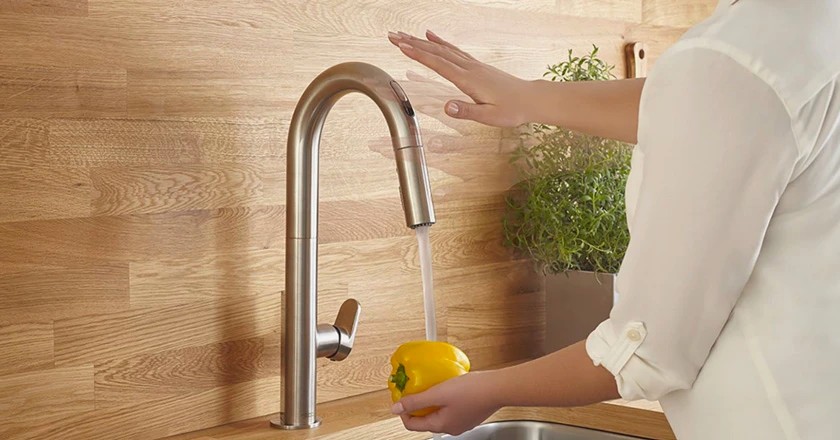Automatic faucets, also known as touchless faucets, have been in use in commercial establishments in Sydney for some time, but they’re a relatively new option for residential use. Still, it’s easy to see why they’re becoming a more popular choice in kitchens, bathrooms, and washrooms because of how convenient and economical they can be.
So what if you’re considering having a touchless faucet installed in your home but at the same time wondering if it’s worth the investment? Here are the benefits you can expect to see with a touchless faucet.
It’s cleaner and more convenient.
Everyone knows that cooking can be messy. Just preparing the food alone can leave grime, fingerprints, and smudges on the surfaces you use, including the handles of your typical faucet. Therefore, clean-up can take twice as long, since it’s not just your hands and the utensils you need to clean, but your work surfaces and the kitchen sink, too.
On the other hand, with a touchless faucet, you’ll have hands-free access to the kitchen sink whenever you need it, and you won’t have to risk, say, turning on the hot water instead of cold by using an elbow or any other part of your body to turn the faucet on. Plus, you won’t have to worry about cleaning the sink and the faucet handles during clean-up, since there’s nothing to have left dirt and grime on during the cooking process.
It’s environmentally friendly.
With a standard faucet, there’s always the chance that you end up using more water than you need, usually because you leave it running for longer than you intended. Touchless faucets, on the other hand, turn off automatically with a single gesture, so they can help you save a significant amount of water.
Such faucets can also be programmed to a specific rate of flow and water temperature, so there won’t be any energy wasted on warming up the water. You can also be sure that the water pressure won’t be too high, thereby preserving the pipes in addition to saving energy. This is a great benefit for households who want to try and cut down on their utility bills each month.
It prevents pathogens from spreading.
When surfaces are used or touched often, there’s no avoiding the build-up of pathogens, including bacteria from uncooked food (E.coli, salmonella, and staphylococcus, for example). Touching those surfaces means you pick up said pathogens on your hands, and they can enter the body when you touch your face, which puts you at risk of getting sick.
You eliminate one potential source of pathogens, though, when you have a touchless faucet. Since no one has to touch any faucet handles to get the water flowing and to turn the fixture off, that means there’s less risk of bacteria and germs transferring from a surface to your face and eventually into your body, therefore keeping everyone in your household safe.
Key Takeaways
It must be said that there are a few drawbacks to touchless faucets. For example, they’re more complicated to install and therefore more expensive, they won’t work if there’s a power outage, and there’s a chance you’ll accidentally turn one on just by moving things around. However, there’s no denying that the pros of touchless faucets outweigh the cons, so it’s worth at least considering hiring a professional plumber to install one. And for issues you need to repair right away, don’t forget to have the contact number of your trusted leaking tap Sydney expert on speed dial.












Comments